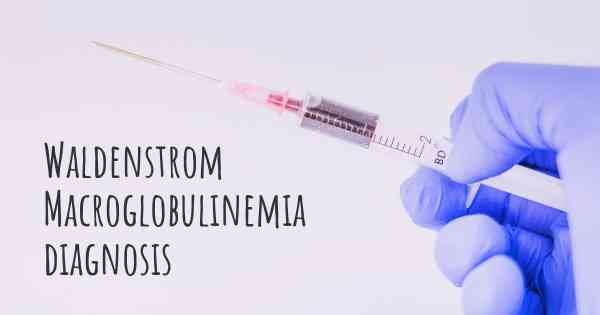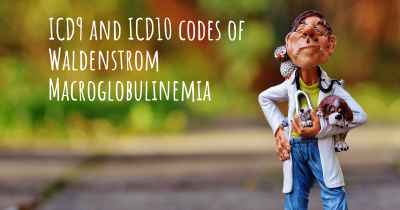How is Waldenstrom Macroglobulinemia diagnosed?
See how Waldenstrom Macroglobulinemia is diagnosed. Which specialists are essential to meet, what tests are needed and other useful information for the diagnosis of Waldenstrom Macroglobulinemia

Waldenstrom Macroglobulinemia (WM) is a rare type of cancer that affects the bone marrow and lymphatic system. It is characterized by the overproduction of abnormal white blood cells called lymphoplasmacytic cells, which produce an excess of a protein called monoclonal immunoglobulin M (IgM). Diagnosing WM involves a combination of clinical evaluation, laboratory tests, and imaging studies.
Clinical Evaluation
The first step in diagnosing WM is a thorough clinical evaluation by a healthcare professional. The doctor will review the patient's medical history, including any symptoms they may be experiencing. Common symptoms of WM include fatigue, weakness, weight loss, night sweats, enlarged lymph nodes, and bleeding problems.
Laboratory Tests
Several laboratory tests are used to diagnose WM:
1. Blood Tests
A complete blood count (CBC) is performed to evaluate the levels of different blood cells. In WM, there is often an increase in lymphocytes and plasma cells. The CBC may also reveal anemia and low platelet counts. Additionally, a blood test called serum protein electrophoresis (SPEP) is conducted to detect the presence of abnormal proteins, including monoclonal IgM.
2. Bone Marrow Biopsy
A bone marrow biopsy is a crucial test for diagnosing WM. It involves the removal of a small sample of bone marrow from the hipbone or another suitable site. The procedure is usually performed under local anesthesia. The sample is then examined under a microscope to assess the presence of lymphoplasmacytic cells and the amount of monoclonal IgM protein.
3. Immunoglobulin Levels
Immunoglobulin levels, including IgM, IgG, and IgA, are measured through blood tests. In WM, there is typically an elevated level of IgM.
4. Serum Viscosity Test
WM can cause the blood to become thicker due to the high levels of monoclonal IgM. A serum viscosity test is performed to measure the thickness of the blood. If the blood is too viscous, it can lead to various symptoms such as blurred vision, dizziness, and bleeding problems.
Imaging Studies
Imaging studies are often conducted to assess the extent of the disease and identify any complications:
1. X-rays
X-rays may be taken to examine the bones for any signs of damage or fractures caused by WM.
2. Computed Tomography (CT) Scan
A CT scan provides detailed cross-sectional images of the body. It can help identify enlarged lymph nodes, organs affected by WM, and any complications such as fluid accumulation around the lungs or abdomen.
3. Magnetic Resonance Imaging (MRI)
An MRI uses powerful magnets and radio waves to create detailed images of the body. It may be used to evaluate the brain, spinal cord, or other specific areas affected by WM.
4. Positron Emission Tomography (PET) Scan
A PET scan involves the injection of a small amount of radioactive material into the body. It can help detect areas of increased metabolic activity, which may indicate the presence of cancer cells.
Confirming the Diagnosis
Once the clinical evaluation, laboratory tests, and imaging studies are completed, a diagnosis of Waldenstrom Macroglobulinemia can be confirmed. It is important to consult with a hematologist or oncologist who specializes in blood cancers for an accurate diagnosis and appropriate treatment plan.
Disclaimer: The information provided above is for educational purposes only and should not be considered as medical advice. If you suspect you have Waldenstrom Macroglobulinemia or any other medical condition, please consult with a qualified healthcare professional for an accurate diagnosis and appropriate treatment.
Posted Sep 8, 2017 by Lynda 1300
Posted Sep 8, 2017 by cindy 400
Posted Sep 9, 2017 by Greg Martin 2450








